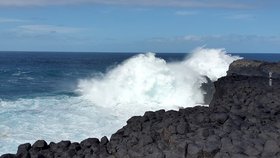Shelf sea dynamics and storm surges

Quantitative projections of future coastal sea level changes and an accurate assessment of socioeconomic impacts of high-end sea level and extreme events demand an improved, detailed understanding of the imprint of all those effects on local sea level. Extreme events often induce damaging morphodynamic changes and coastal erosion. Essential for the use of sea level information in coastal management is the availability of likelihood information and uncertainty measures. For this, we need to propagate the full error information and probability density functions from the global scale or remote location to any coastal locations together with sea level information itself, be they caused by ocean and climate dynamics, resided in the solid Earth, or originated by the cryosphere and hydrology.
However, estimates from existing climate model projections (e.g. CMIP5) suffer dramatically from the lack of all processes involved. This includes lack of spatial resolution of the ocean model components required to simulate shelf sea and coastal processes (1°-2°, vs. 1/10° and finer resolution required for regional/coastal simulations), but also lack of pertinent physics, such as coastal and shelf sea dynamics. Consequently, sophisticated regional downscaling efforts of the largescale climate sea level signals are desired to assess vulnerability and potential resilience capacities. In addition, local water withdrawal and/or land use change also affect local relative sea level change.
Already Denbo and Allen (1987) have shown that the characteristics of the large scale response of coastal sea level to fluctuations in wind stress can be very variable with latitude and in time, revealing the influence of many coastal dynamical details. More recently, Dangendorf et al. (2013) investigated sea level trends derived from the North Sea, North Atlantic and Mediterranean Sea tide gauges and showed that regional and local atmospheric forcing is partly responsible for the observed regional patterns of sea level change, and to some extent also to regionally dependent acceleration in sea-level rise during the 1990s. Along the western European coast, tide gauge records show significant decadal variability (up to 15 cm) and a high correlation with the NAO and among themselves at decadal periods (Calafat et al., 2012). Boundary waves may propagate thousands of kilometers poleward and raise sea levels also in the North Sea (Dangendorf et al., 2014).
The baroclinic nature of these signals provides important information about required horizontal resolution (<20km) of downscaling experiments. Similar contributions from all relevant climate modes, e.g. in South-East Asia originating from the El Niño Southern Oscillation (ENSO), the Pacific Decadal Oscillation (PDO), the Southern Annual Mode (SAM), and the Indian Ocean Dibpole Mode (IODM), need to be quantified for our study regions, where alongshore wind and wave propagation could be major contributors to coastal sea level variability.
